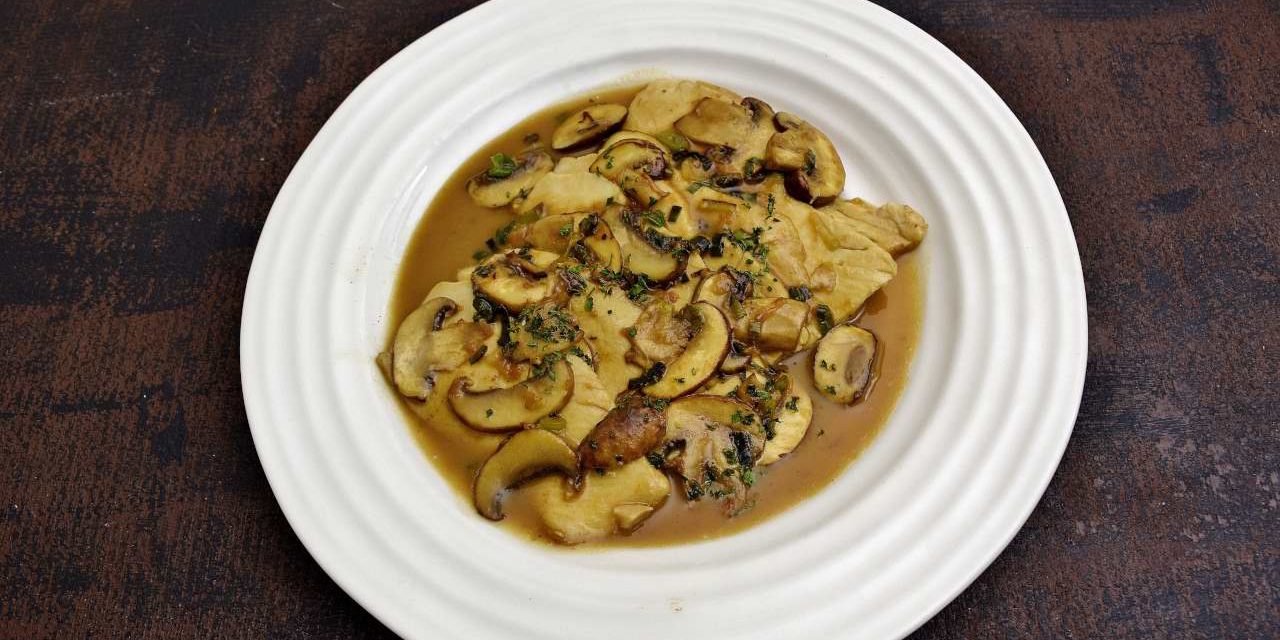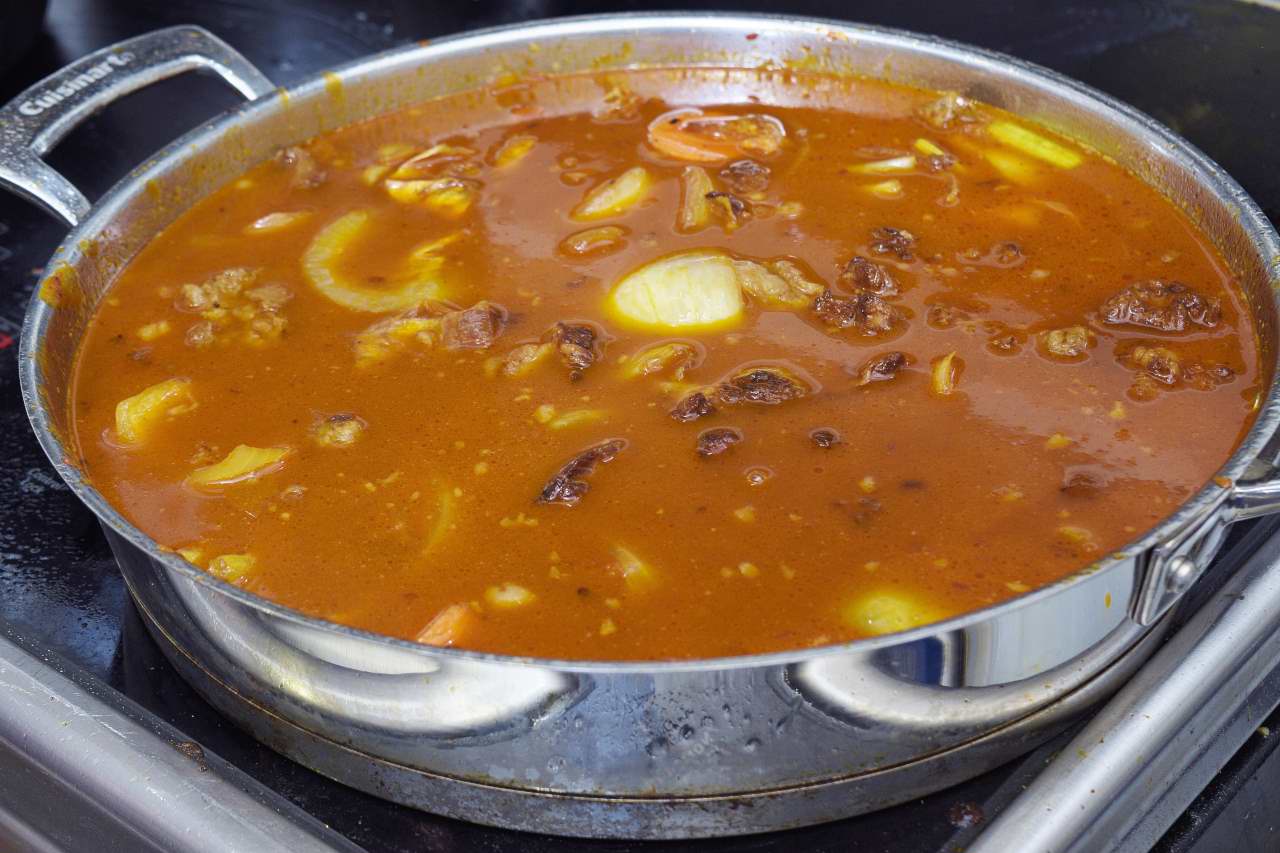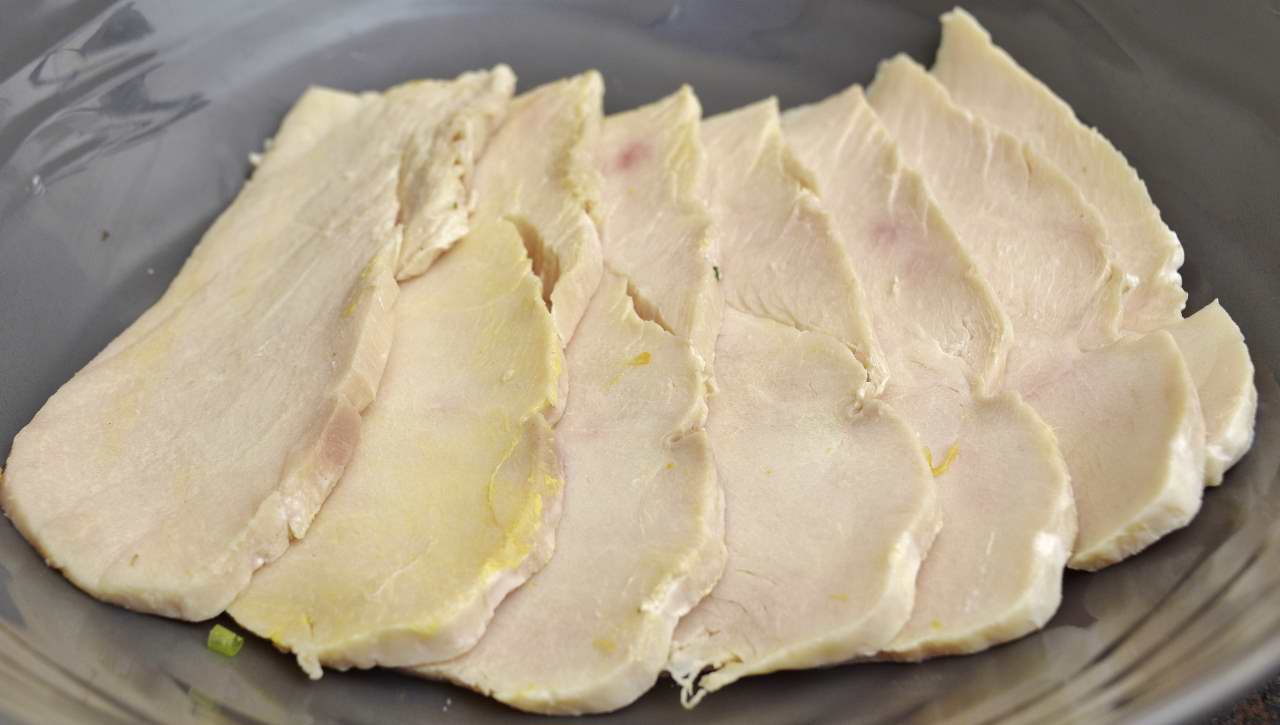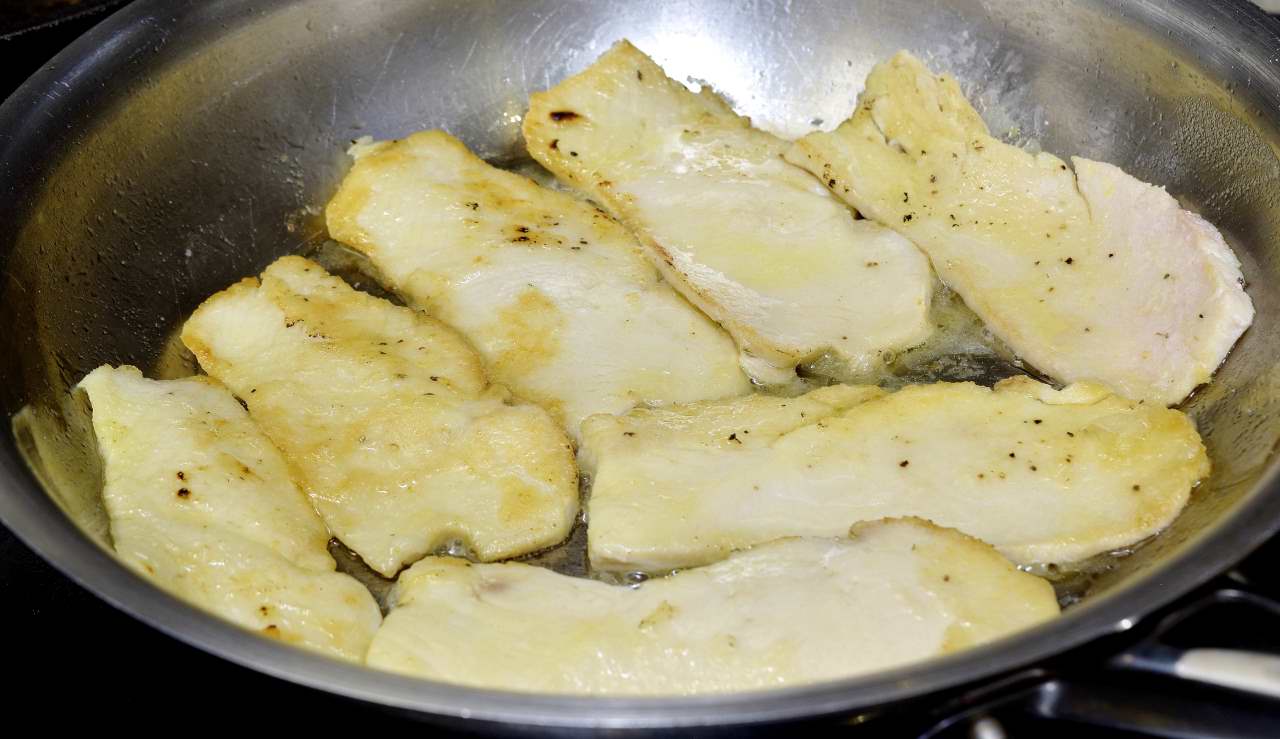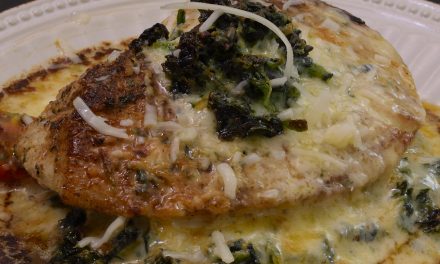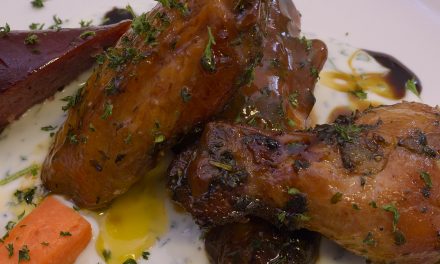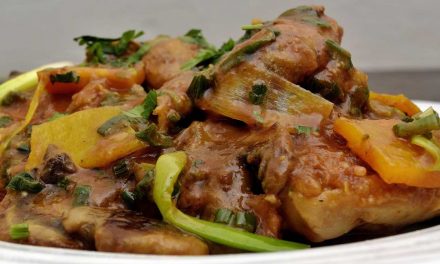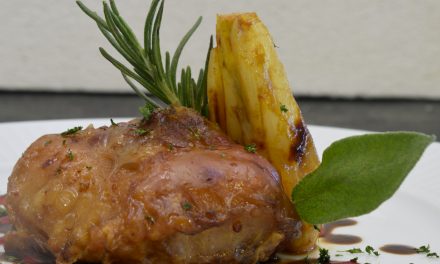A scallopini is not a cute little mollusk
I get asked a lot of questions in SVR–Sous Vide Resources; Sous-B-Q™, Sans Vide™, Meat Curing and Smoking, the FB group that I’ve hosted for the last six or seven years. The questions are not always about sous vide, but most of them are about how to use sous vide to recreate classic dishes that predate the technology. There is a good reason for this. I reassure people that sous vide was never intended to replace all of our favorite dishes with something else.
The fact is, many familiar dishes are improved and even simplified by inserting sous vide processing at one point or another in the ancient, loosely standardized recipes. Things like fried chicken and pork spareribs become easier, and safer too.
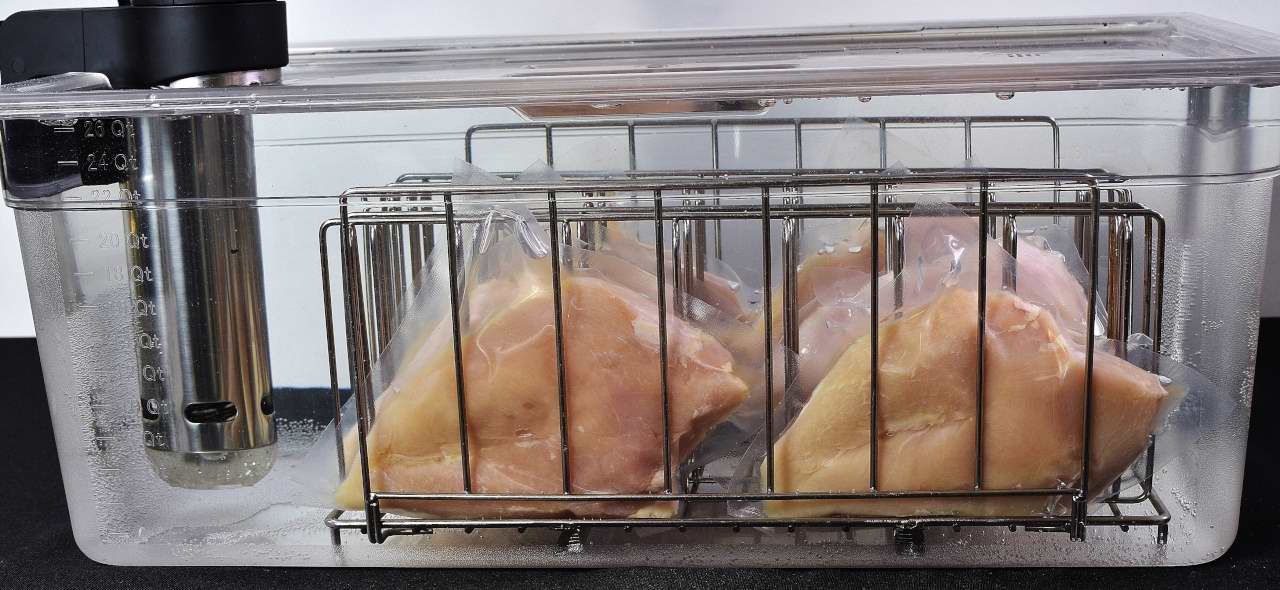
Staring at the Rosetta Stone
Recently one of the more active members of SVR lamented his inability to recreate the Chicken Marsala that he had become enamored with in his favorite local restaurant, and Italian-American restaurants in general. Chicken Marsala is a familiar dish, and he had scoured the internet looking for keys and secrets to success. He’s a very engaging and polite person. He had cautiously “grilled” the chef of at least one restaurant in order to acquire the exact method used to make the dish; he was determined to figure out what he was missing.
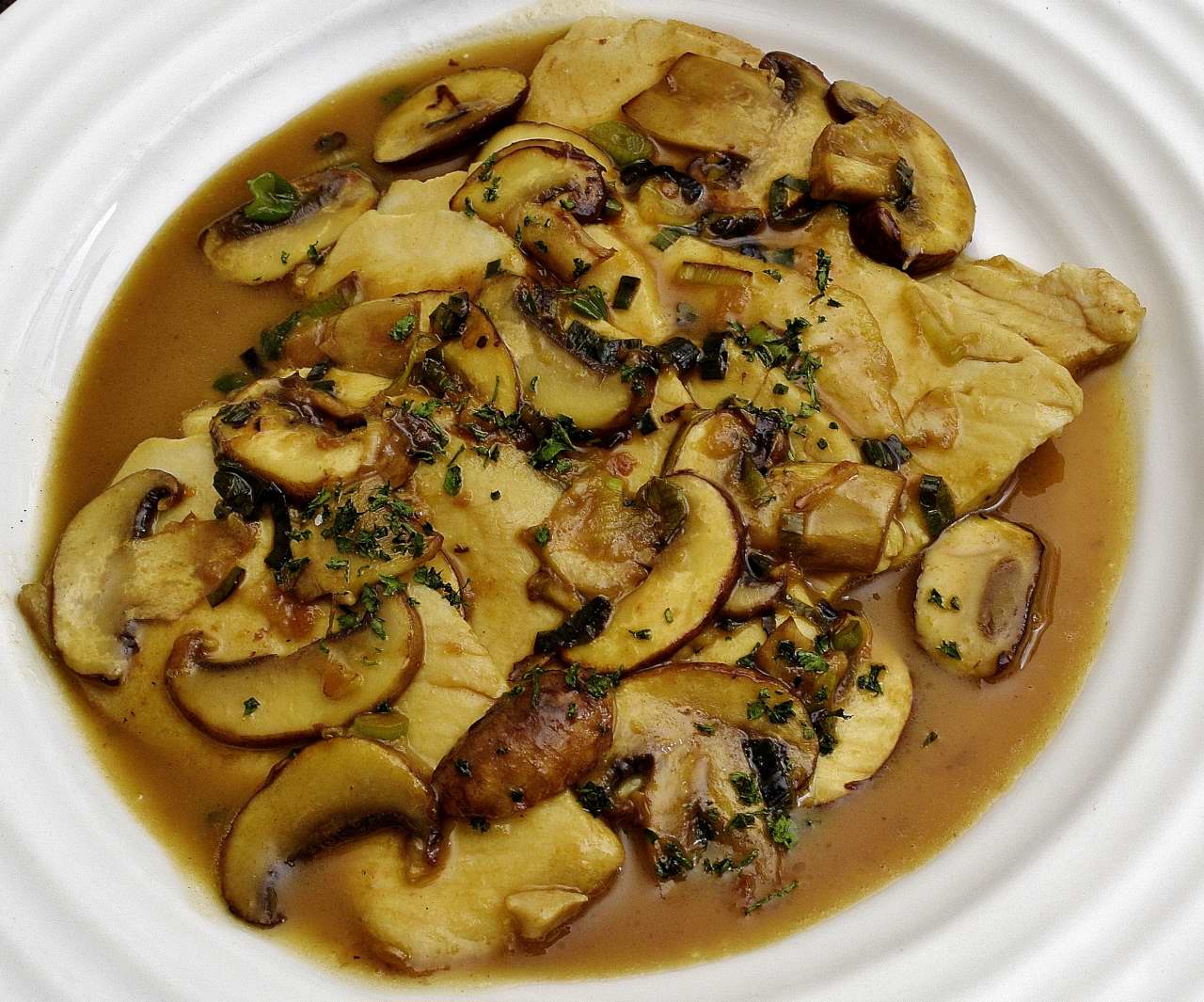
Chefs can be secretive, we all know that. Many of us feel like we paid a high price for a knowledge and are hesitant to give it away for free–especially to a client that we might end up losing as a result. “If I tell you how to make it, you won’t need ME any more!” Many of us learned how to make these dishes so long ago we don’t really go through the entire procedure in our heads when we make them. Carpenters don’t start work by saying “This is a hammer, and this is what they call a nail. Interesting.”
So much chemistry, so much fluff
Among many other inadequacies, recipes gleaned from cookbooks and other media tend to lump together the stylings of a dish with the actual chemistry that makes it work. When you google “Chicken Marsala,” there is no shortage of hits. Almost all of them describe the dish as being made from Chicken, Mushrooms, and Marsala wine. Some of them elaborate things like shallots and garlic, etc., As innocent as that sounds, those descriptions, true though they may be, create a host of problems for novices and even seasoned diners who like to cook at home.
The fact is, as far as chemistry goes, butter is more important to Chicken Marsala than mushrooms and most of the other things on the list. Yes, you need chicken. You can’t make Chicken Marsala without Marsala. But whether you make Chicken Marsala or Veal Marsala or even Pork Tenderloin Marsala, you will not get (good) restaurant style results unless you understand how to incorporate butter into the dish. And you can’t just add butter to the sous vide bag (please don’t), or simmer or saute or fry the chicken in butter to satisfy this requirement. Well, what difference does it make when and where the butter is added?
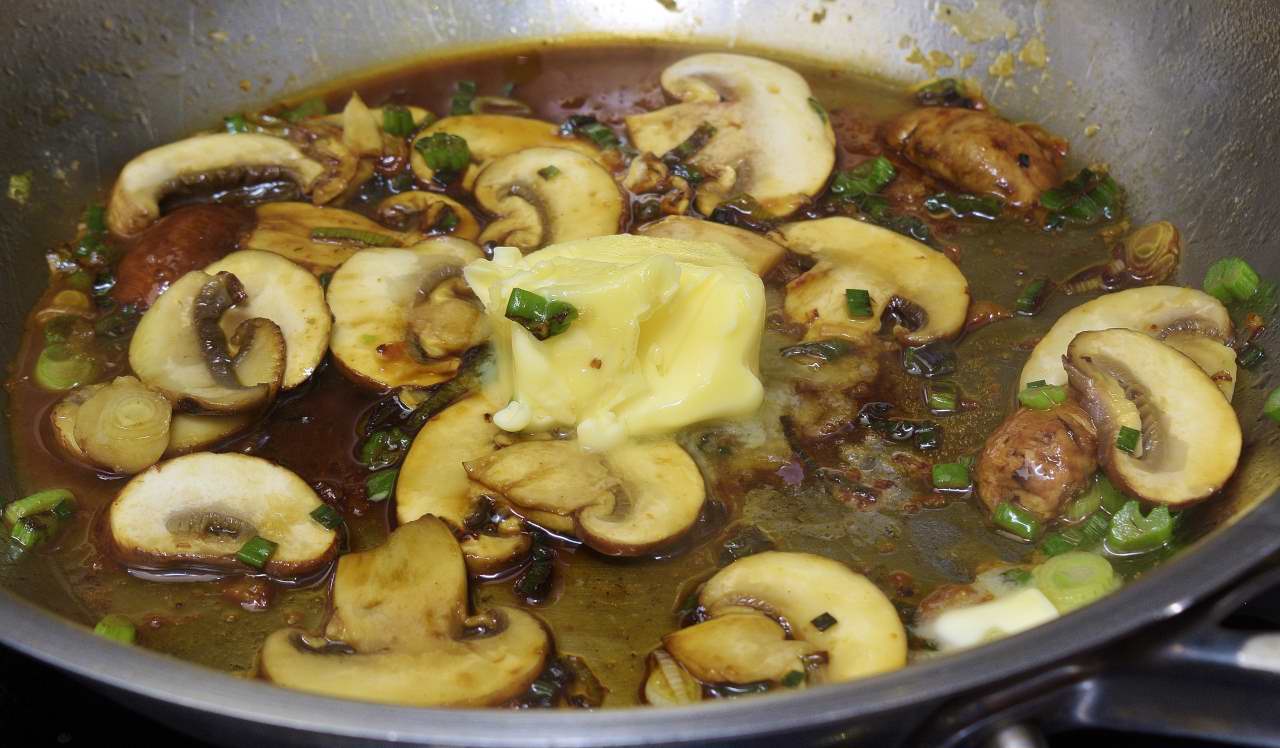
Oh, no, not again
There are what I like to call “zillions” of Italian/American dishes whose foundation rests on round slices of thinly sliced/pounded veal. Veal Scallopini, Veal Piccata, and myriad other regional variations exist, but almost all of them have butter in common. Being a little squeamish about the notion of slaughtering an innocent calf resulted in Americans substituting chicken for veal a long time ago. There’s a story that goes with that, but we will stay out of that rabbit hole for now.
Turn down the volume
So what is the significance of butter in all these, and so many other scallopini-ish dishes? The answer requires us to abandon an assumption that most people make about Chicken Marsala and all the other incarnations. That supposition is that the sauce is basically a “gravy” whose volume is created by the presence of Marsala. This is a widespread misconception about “pan sauces” in general. I will try to dispel this notion. Let’s talk about the volume of the sauce–the actual amount of liquid.
Wine is a commonly used flavoring in many styles of cooking, notably French and Italian, but many others as well. Lemon juice, also. But wine and/or lemon juice are not intended to provide the VOLUME of a sauce. Typically, the wine (or brandy, or whatever) is REDUCED to either almost nothing, or the syrup stage if sugar is present. The volume is created by water. Well, let me qualify that. A water BASED liquid. This is where stock plays a major role–even though stock is almost never mentioned in the abbreviated recipes that are widely available.
When it is mentioned, nobody really goes in to WHY the stock or the water is there–we are left to assume that it must be flavor or salt or something, because nobody bothers to explain. What kind of chef doesn’t have stock simmering on the stove at all times anyway? It’s no wonder we neglect to mention it–stock is incorporated in to almost everything at one point or another unless you’re working in the bakery or the butcher shop. Stock is the ingredient that creates the volume of sauces. It’s so primal, so basic, we tend to assume.
Good gravy
Let’s digress for a moment. I mentioned that most people imagine the Marsala sauce to be “more or less” (I hate that cop out), a “gravy,” as in “thickened with flour.” But it’s not. Marsala sauce, Piccata sauce, even that multi-ingredient Scallopini sauce are all EMULSIONS. Simple emulsions, no special procedure or stick blender required. Wait. WOOT? Again, for most chefs, this is so mindless we don’t even think to mention it. When the pan sauce is being finished, you ALWAYS incorporate at least a pat of cold butter.
As you swill it around, it melts into the liquid that is otherwise quite thin, and, yes, it thickens it as the phase dispersing butter is distributed into the phase continuous water. If there is too much water/stock, the butter floats on top. If there isn’t enough water/stock, you are left with a broken, greasy result. Yes, a little practice is required. That’s why cooks get paid.
The order of things
So here’s how it goes. I mentioned that the term “scallopini” refers to round, thin slices, usually pounded out, esp. when it’s veal. You can pound out the chicken too, but even that is not really part of the CHEMISTRY. The shape, the thickness, really doesn’t matter as far as the chemistry goes. There is another misconception in this simple step as well. You dip the chicken in flour, yes? This prevents it from sticking to the pan–but that flour is not going to provide thickness to the sauce. If it does, you used too much! Exposing the flour to the heat of the oiled pan greatly reduces the flour’s ability to thicken.
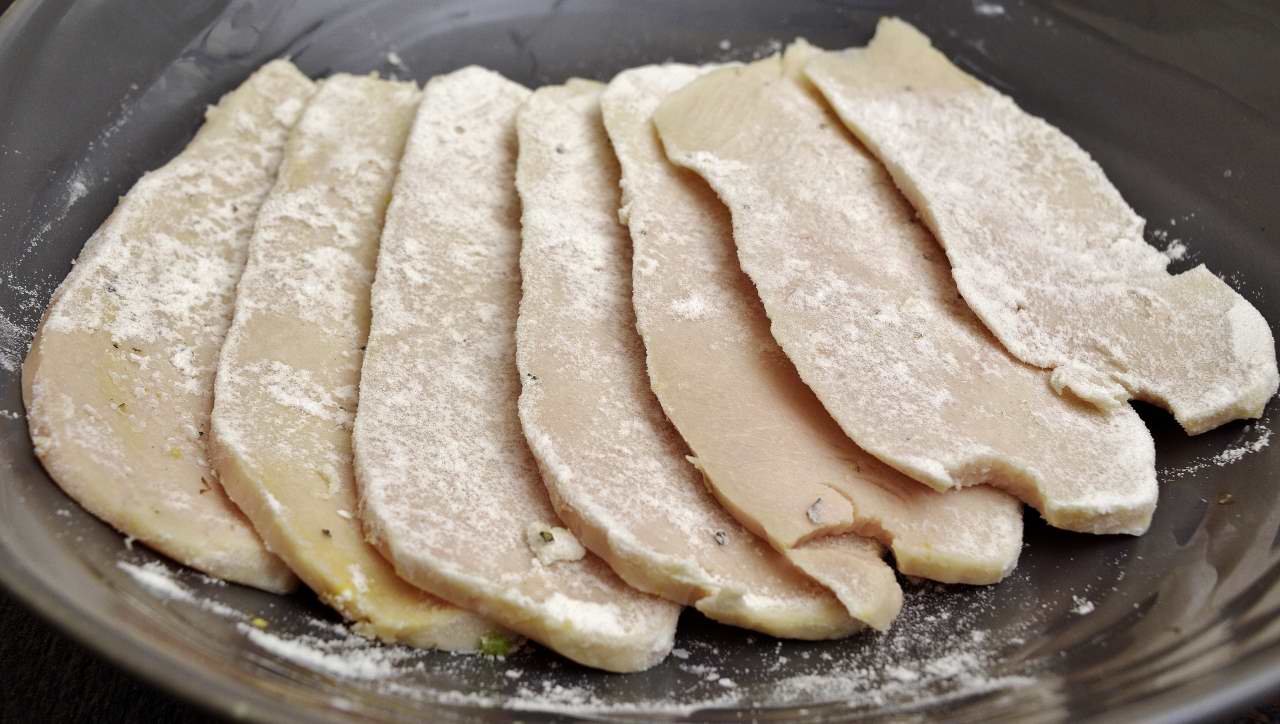
Most people proceed to anxiously brown the chicken on one side, flip it, splash a couple of drops of hot oil on their wrists, wince, and then start adding the other ingredients to the pan, right? You hope for flames when you dump in the booze, and then the chicken simmers in the “sauce,” the “sauce” simmers around the chicken, the flavors are happily married together and all is well, yes?
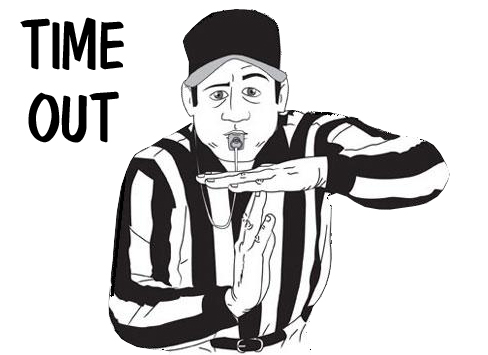
“Sigh” SMH
You really do see cooks in restaurants do this all the time, mostly as a combination of imagined convenience, ignorance, and the crazy idea that (raw) chicken will cook submerged in liquid at 212F faster than it will cook in a pan at 375F. Let’s put it this way:
I was TRAINED not to do this oh, so long ago, and I was expected to do as I was told without any explanation. Ah, the old days. Good times! I don’t like to use the word “supposed” but I will make an exception–the veal, chicken, venison, whatever is “supposed” to be cooked through before anything else hits the surface of the pan. Otherwise it is not a saute. Cooking something in liquid makes it a stew/braise, and not a very good one at that in this case. It’s not like a few minutes in the pan is going to tenderize anything, so there really is no purpose. Instead, the protein is REMOVED from the pan, in which the “pan sauce” is then made.
Why? Like I said–adding all that stuff to the pan isn’t going to make the chicken cook any faster. Cooking it more isn’t going to make it any better, that’s for sure. Done is done. And we already know that nothing but salt can penetrate the surface of the chicken anyway, right? Well, not everybody knows this, but we do talk about it a lot in group. HERE’S one piece of a large body of evidence confirming this assertion.
Back to how it goes
So, the chicken is dredged in flour on one side only and sauteed in just enough oil to create the effect. Nobody is going to flip it over to see if there is flour on the down side. Once the slices are seared on both sides they should be somewhat brown, and there should only be a few drops of oil in the pan. There is usually a little bit more than that, so you tip the pan and pour out that oil. Back on the burner we go.
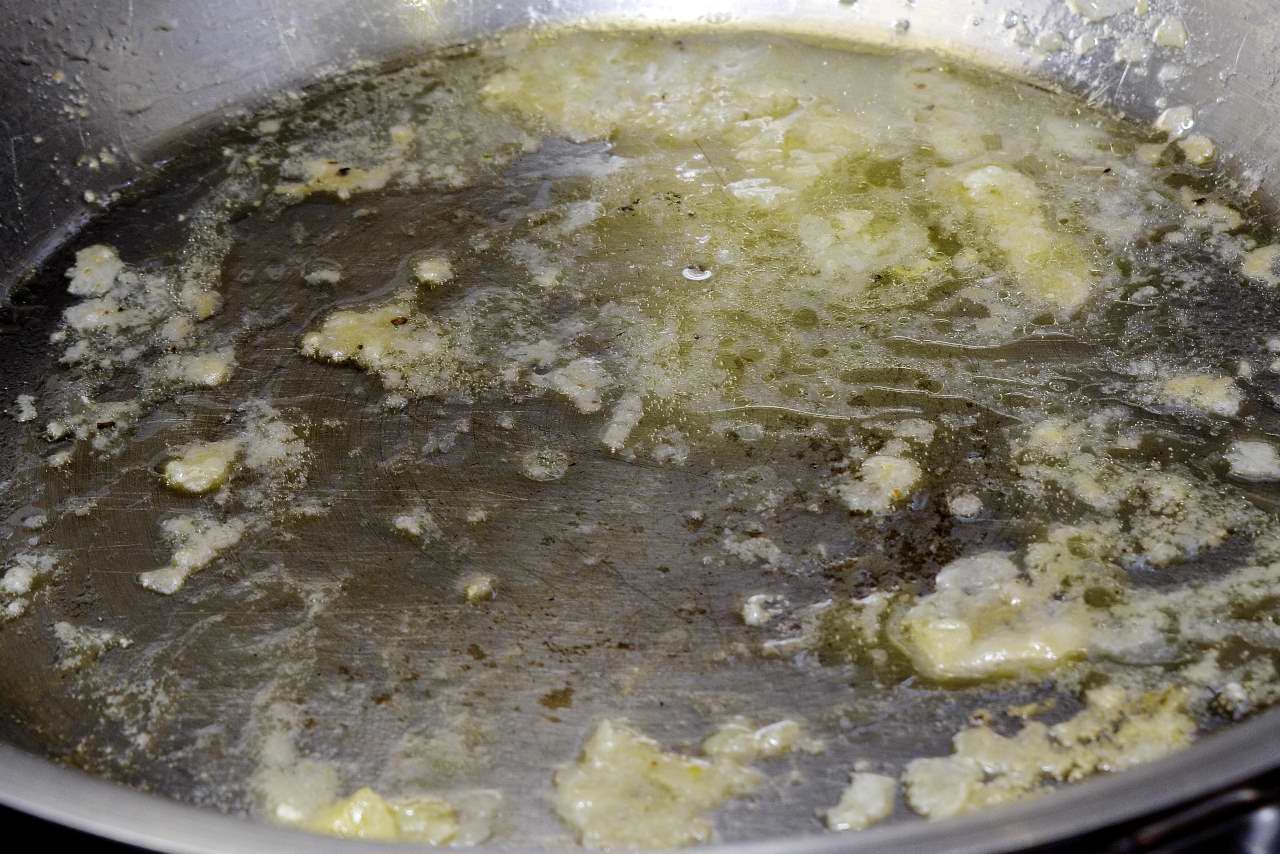
Add the stuff.
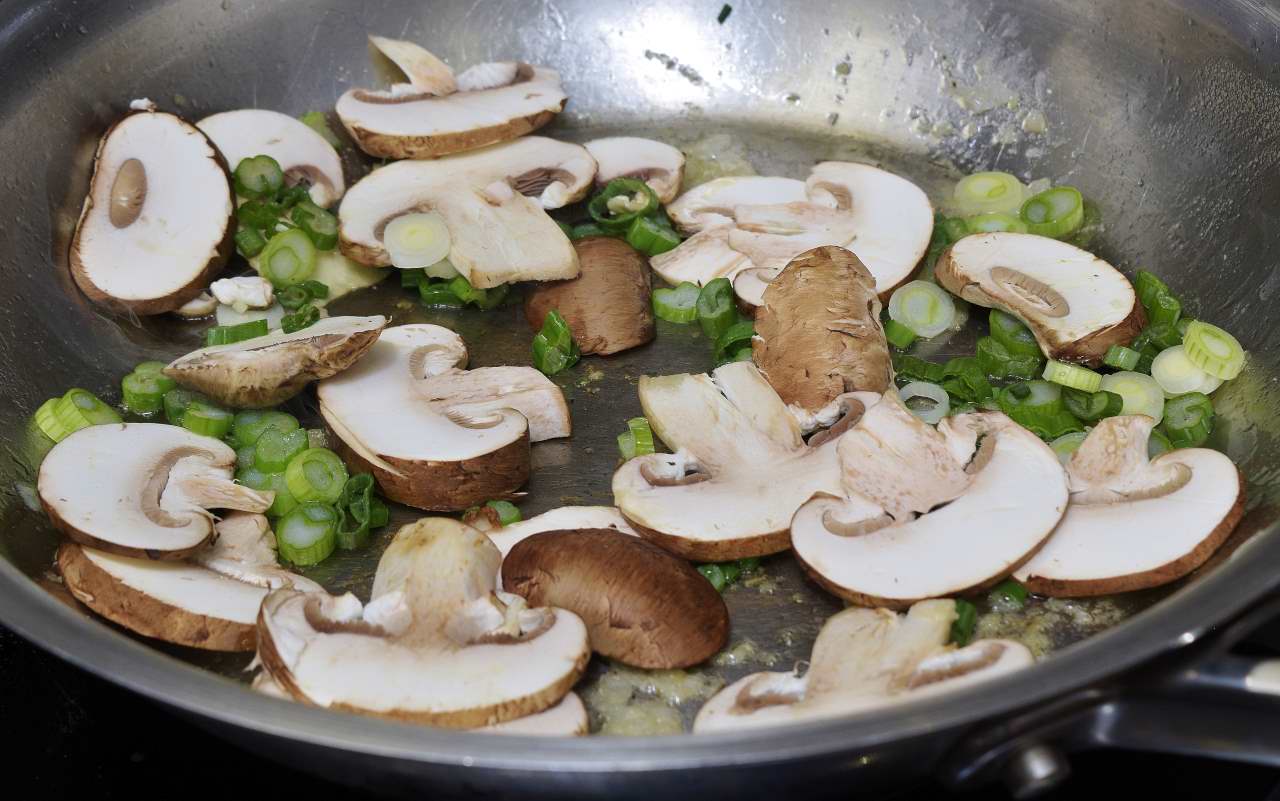
There is some chemistry involved because even though you can put garlic in this dish and many others, a really hot pan will burn the garlic unless you are really agile. Shallots are a little bit more forgiving of high heat. There is no shame in powdered garlic, so it can be substituted after you add the mushrooms–like I say, the garlic is not part of the chemistry. I add green onions with the mushrooms because I am nuts for green (formulas below).
The pan should be big enough that each slice of mushroom actually touches the bottom of the pan. If it doesn’t, you are not sauteing your mushrooms. You are steaming them. The pan should sizzle, and it should not STOP sizzling.
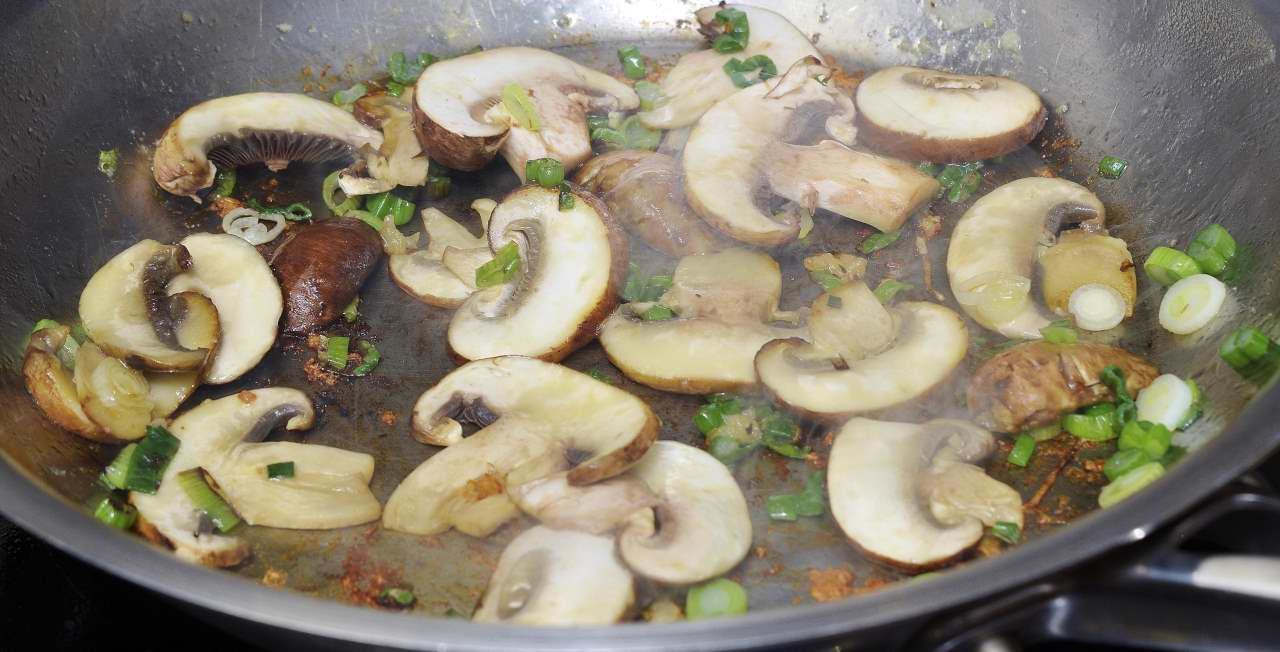
The mushrooms wilt, you add the Marsala. It’s alcoholic, so it comes to a boil right away, hissing like a snake. There is debate as to how much of the alcohol is removed by this process, but it doesn’t matter. Not part of the chemistry. The pan is hot enough that the wine reduces to the syrup stage quickly, and the steam from the mushrooms goes UPWARD, not DOWN into the pan.
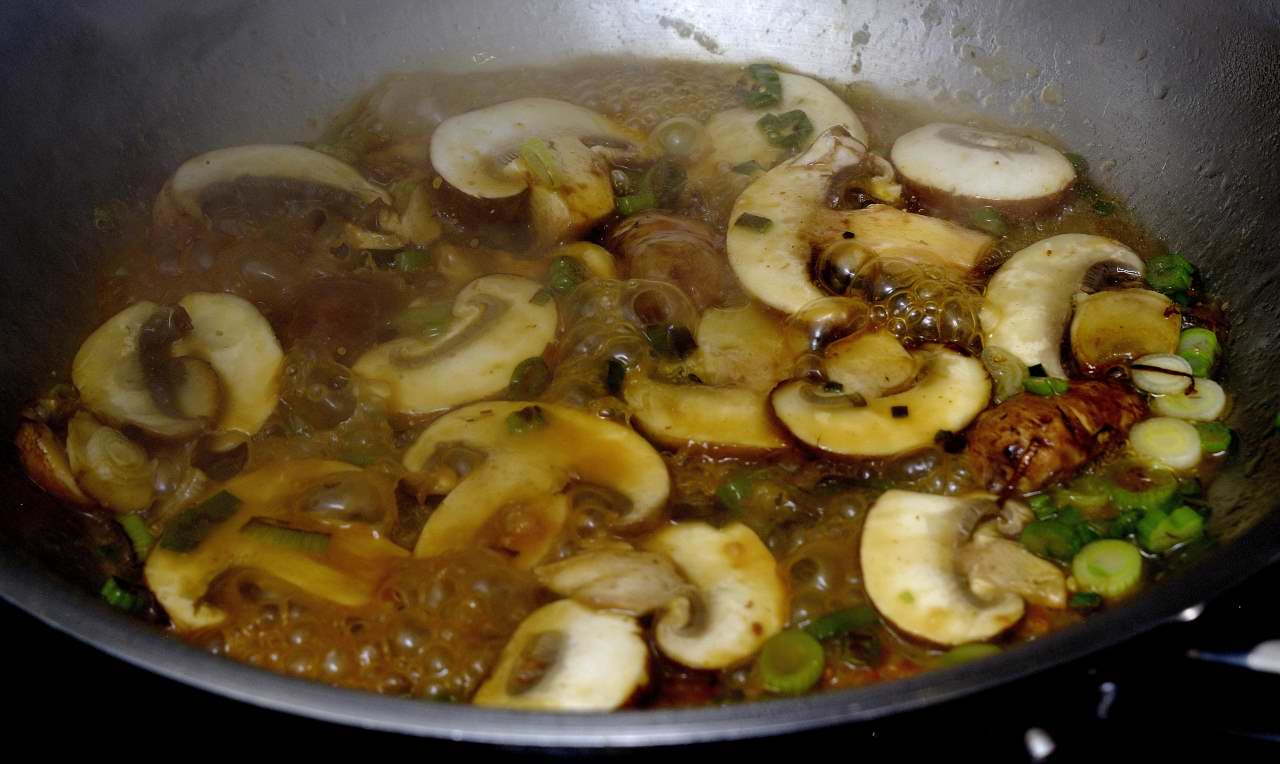
NNNNNNNEXT!
This really is mindless for chefs, but it’s easier to figure out in reverse. Assuming you are making just one order of your wonderful poultry dish, how much sauce should there be, the solid ingredients notwithstanding? Stumped? It can vary, because of the nuanced heat of the pan and other factors. But you really don’t want to end up with more than 3 oz/ 75 ml of sauce for a dish like this.
So, you add 2 oz/50 ml of stock, which of course will come to a boil almost immediately unless you got scared and turned down the heat.

Then you put in what chefs call a “pat” of butter, which is more like an ounce, haha, you know, like a fourth of a stick. I know, I know. That sounds like a lot. You can get by with less. You can put in quite a bit more without breaking the emulsion. But, like I said, for cooks, it’s pretty mindless. Who’s counting calories now?
If you add butter in the amount of half of the volume of the stock, that sauce will thicken almost immediately, and I never met a cook who wasn’t in a hurry. You put the chicken back in the pan, but DO NOT BOIL AGAIN.
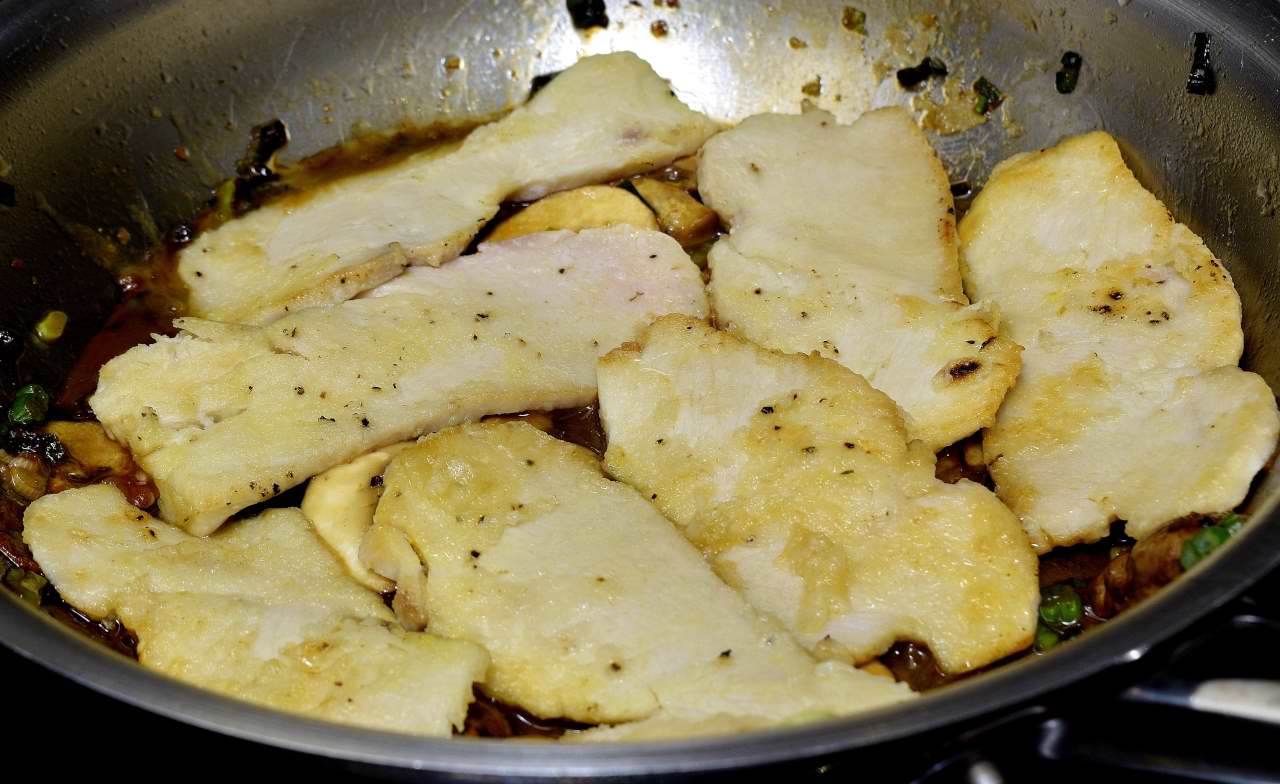
Toss the chicken in the sauce and on to the plate we go.
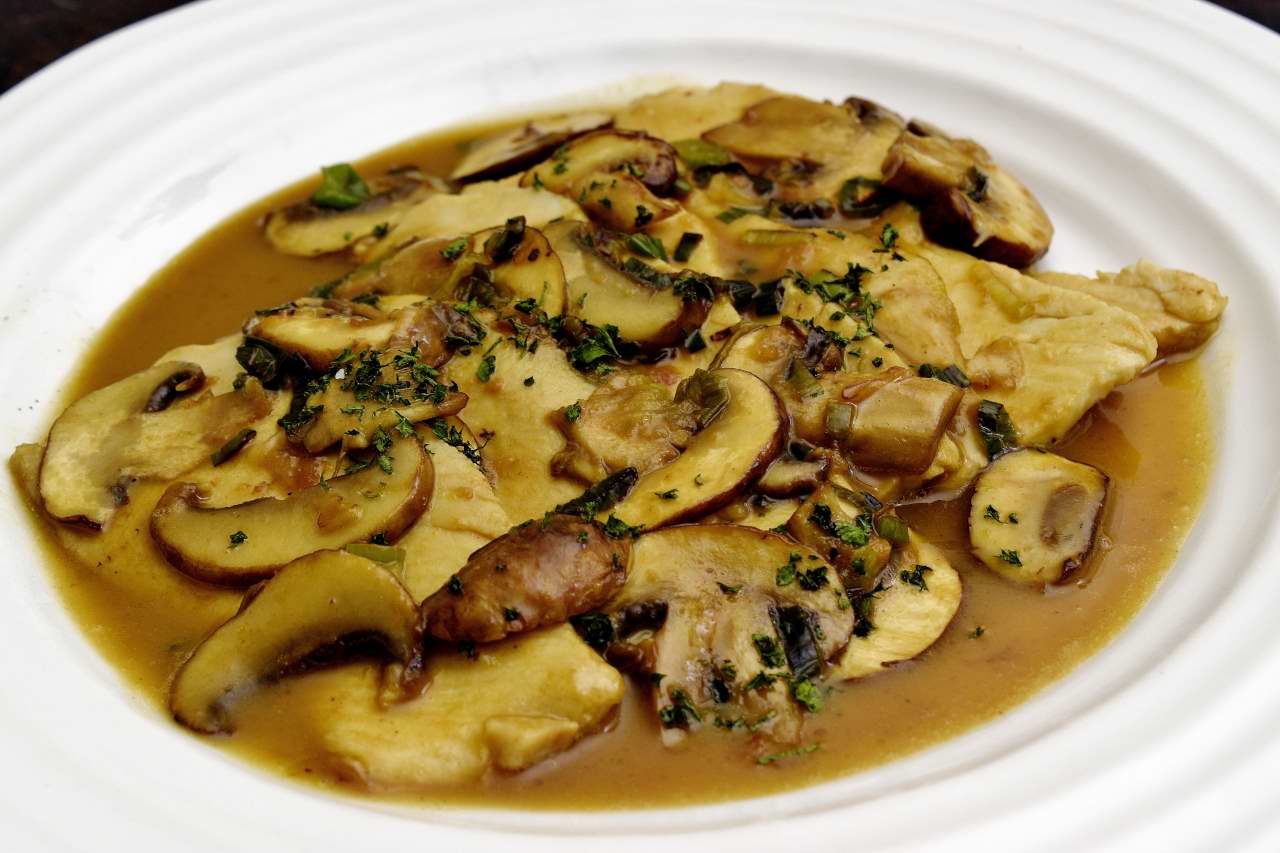
Here’s the formula?
- Chicken breast, 6 oz/175 g, processed @140 F/60 C for four hours–this pasteurizes the chicken. Shock in iced water until it hits 70 F/21 C, then refrigerate at 40 F/4 C until you are ready to rock.
- Kosher salt, 1 teaspoon per lb/450 g of protein.
- Black pepper, a pinch.
- Flour to dredge, an immeasurably small amount.
- Vegetable oil, 1 oz/25 ml. Italians use olive oil–because that’s what they HAVE. Cooking EVOO kills the flavor and benefit, so save it for the aioli.
- Green onions/scallions, 1 each, sliced straight and as thin as possible.
- Mushrooms, sliced, 2 oz/60 g is a lot more than it sounds like.
- Garlic powder, a pinch (or fresh if you want to roll that way.)
- Marsala, no more than 1 oz/25 ml.
- Stock–any kind other than fish, chefs usually don’t distinguish unless they are really anal. Dark, light, work it out. 2 oz/50 ml “or so.”
- Butter, cold, 1 oz/30 g “or so.”
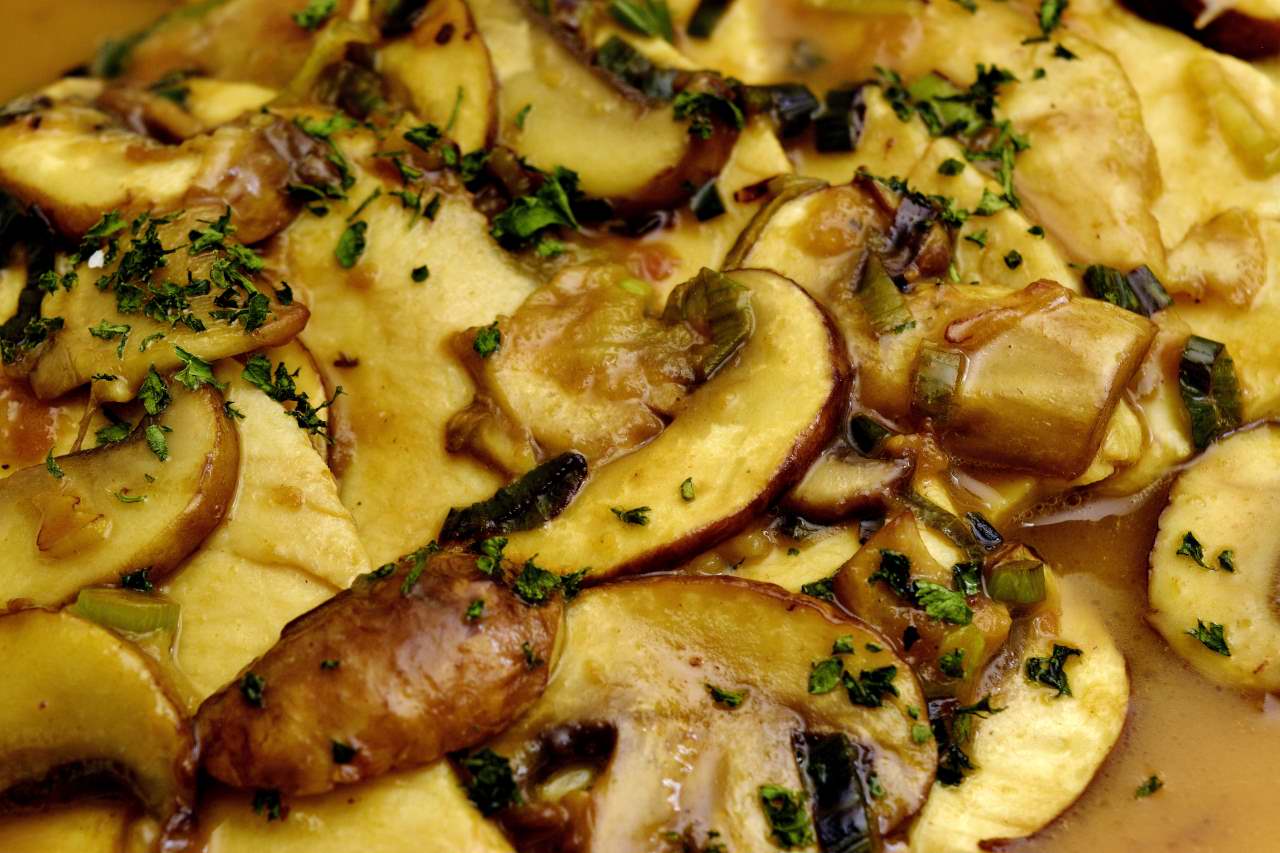
That’s a lot of words for something so simple. Ah, well, I wax.

